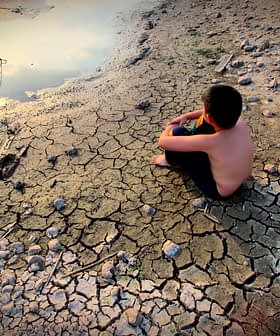Flash Droughts Are Happening More Quickly and Lasting Longer, Study Finds
A new study in Nature Communications indicates that flash droughts are becoming faster, with the rapid onset and intensification of drought occurring in just five days, leading to significant economic losses in agricultural sectors worldwide. The researchers suggest that increasing atmospheric aridity is fueling the phenomenon in regions prone to flash droughts, with the duration of these events increasing over the last two decades.
According to a new study in Nature Communications, flash droughts, or the rapid onset and intensification of drought, are becoming even faster.
Researchers found that these extreme events can dry up the soil in large areas and occur with the same frequency in the last two decades. However, it takes less time for them to happen, and their duration is increasing.
The researchers added that increasing atmospheric aridity fuels the phenomenon in many world regions.
See Also:Time Running Out to Prevent Worst Impacts of Climate Change, U.N. Says“Globally, the flash droughts that come on the fastest, sending areas into drought conditions within just five days, have increased by about 3 to 19 percent,” the researchers wrote.
“And in places that are especially prone to flash droughts such as South Asia, Southeast Asia and central North America, that increase is about 22 to 59 percent,” they added.
The damage caused by flash droughts can extend to all agricultural sectors and the general economy.
Though they are short-lived, lasting from a few weeks to a few months, such events can occur in critical growing periods.
In the study, the authors cite the 2012 flash drought that hit the central United States between May and August and resulted in an estimated $36 billion (€34 billion) in losses to agriculture and the local economy.
Similar incidents have been recorded in many other countries, including China and several African nations.
In southern Queensland, Australia, in 2018, a flash drought “de-vegetated the landscape and drove livestock numbers to the lowest level in the country.”
One of the reasons for such enormous damage caused by flash droughts is their rapid onset, which happens without any warning, preventing farmers and local populations from preparing.
By analyzing the global hydro-climate data sets based on the satellite measurement of soil moisture, researchers found that flash droughts’ onset in the last two decades required just five days, 34 to 46 percent of the time.
Seventy percent of those phenomena develop in less than half a month. The research hints that rising global temperatures might be the precursor of such events and the reason for the acceleration reported in their onset.
The study also found that regions undergoing significant seasonal changes in humidity might be specifically prone to flash droughts, such as the eastern United States, the Amazon basin or Southeast Asia.









